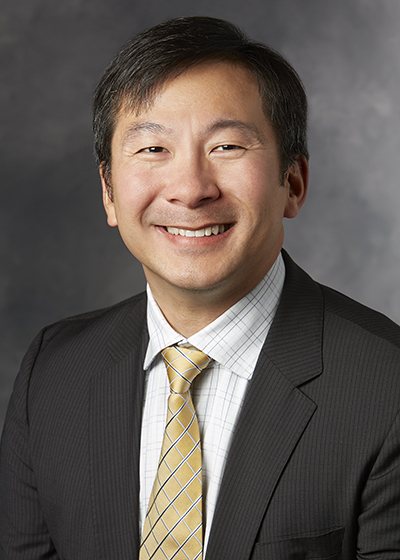Think for a moment about your favorite sounds...
Music, perhaps, like the young Julie Andrews singing "I Could Have Danced All Night" from MY FAIR LADY; or the laughter of someone you love, like when my wife Gloria wins at cards for the 43rd time in a row; or Nature, the whistle of wind through a pine tree forest, the crash of surf on a distant shore, or the snarling inhalation of a Bengal tiger.
Now imagine those sounds gone: gone forever, leaving only perpetual silence.
Helen Keller, both blind and deaf, was asked which condition was more difficult. She said: "The problems of deafness are deeper and more complex...than those of blindness. Deafness... means the loss of the most vital stimulus -- the sound of the voice that brings language, sets thoughts astir, and keeps us in the intellectual company of man."
How big a problem are we talking about?
"Hearing loss is a permanent sensory disorder affecting over 278 million people worldwide. In the US... 20% suffer from this sensory deficit.
"Existing treatments aim at improving the symptoms of hearing loss, yet fail to reverse the main underlying (problem), loss of inner ear sensory hair cells."
Deep within the inner ear, inside the snail-shaped cochlea, are tiny organs with hair-like tips. Immersed in liquid, these hair cells (HC) transmit vibrations to the brain, which interprets those vibrations as sound.
We are born with a finite number of these cells, perhaps twenty thousand in each ear. As these die off--through old age, chemical poison, disease, or the blast of noise-- our hearing diminishes. Lose enough hair cells, and we join the millions who are deaf.
The humble chicken can regrow its haircells; so can the silver dollar-sized zebrafish.
But not us.
Hearing aids provide a limited degree of help, as do cochlear implants: these are better than nothing. But to regain the full range of hearing, the subtlety and grandeur of sound? That is forever denied us.
Or maybe not.
If you visit Stanford (and you should, for it is both a place of beauty and an educational environment like no other) look for the Lorry I. Lokey Stem Cell Research Building. Named after the legendary friend of science, Lorry Lokey, the facility was built with his help, and Stanford's-- and a $43 million grant from the California stem cell research program.
Inside its walls, dedicated scientists and doctors fight the afflictions of humanity.
There are also two older labs, Stefan Heller's and Alan Cheng's, where hearing loss is also fought with stem cells, each from very different angles.
Dr. Cheng hopes for progress with an unusual source of hair cells. The utricle, a tiny organ inside the cochlea, is the center of gravity awareness. When the elevator floor drops down, or the fighter pilot swerves his jet, it is the utricle which signals us. It has hair cells (HC) very similar to those which give us hearing, but with one crucial difference: for a short time, these hair cells regenerate.
"These balance organs are unique in mammals because they exhibit a limited capacity to regenerate hair cells, an ability that non-mammalians species possess. We have been characterizing (hair cell) progenitors in the balance organs from mice and surgical patients because they will likely give us the clues to regenerating our hearing organs ."
Dr. Cheng hopes to take tissues from the utricle and see if they can be encouraged to grow hair cells for hearing. Perhaps the signals which turn on the process during early growth can be turned on again.
And how does one get a flesh-and-blood utricle, from within the cochlea?
"If a patient has a tumor in the inner ear, and surgery must be done to remove the cochlea and the balance organs, this would provide a valuable resource to improve our understanding of hair cell progenitors."
His overall thoughts? "Regenerating hair cells in humans to restore hearing is going to be a long journey with numerous obstacles. But with the support of the California Institute of Regenerative Medicine and the Stanford Initiative in Curing hearing loss, I believe we are well positioned to overcome these challenges in years to come. --Alan Cheng, personal communication.
Taking a different approach, what if we could simply grow a few million hair cells, developed from embryonic stem cells?
Dr. Stefan Heller has been working on this simple-sounding but very complicated task for more than ten years.
"The most exciting long-term goal...is to provide an abundant source of human inner ear progenitor cells that can... routinely create human hair cells...(This would) offer for the first time...the opportunity for detailed studies of this cell type...we envisage that (the research might) result in novel treatment strategies to cure deafness and potentially other inner ear diseases..."--
Both scientists have received grants from the California Institute for Regenerative Medicine (CIRM, the California stem cell program), and are the recipients of numerous awards. Their lives are dedicated to the long struggle: the fight against deafness.
"Curing hearing loss is a difficult endeavor and only a handful of laboratories worldwide are working on finding biological cures. Stanford aims to become one of the leading centers in the fight for a cure and plans are to further expand the existing group in the upcoming years."--personal communication, Stefan Heller.
So the next time someone snaps their fingers, or turns on a noisy air conditioner, think of the hair cells inside your ears, and wish "Good Luck!" to the California stem cell program, and the men and women of the Stanford Initiative to Cure Hearing Loss.
Don C. Reed is the author of the forthcoming book, STEM CELL BATTLES: How Ordinary People Can Fight Back Against Chronic Disease, available for pre-order at Amazon.com


